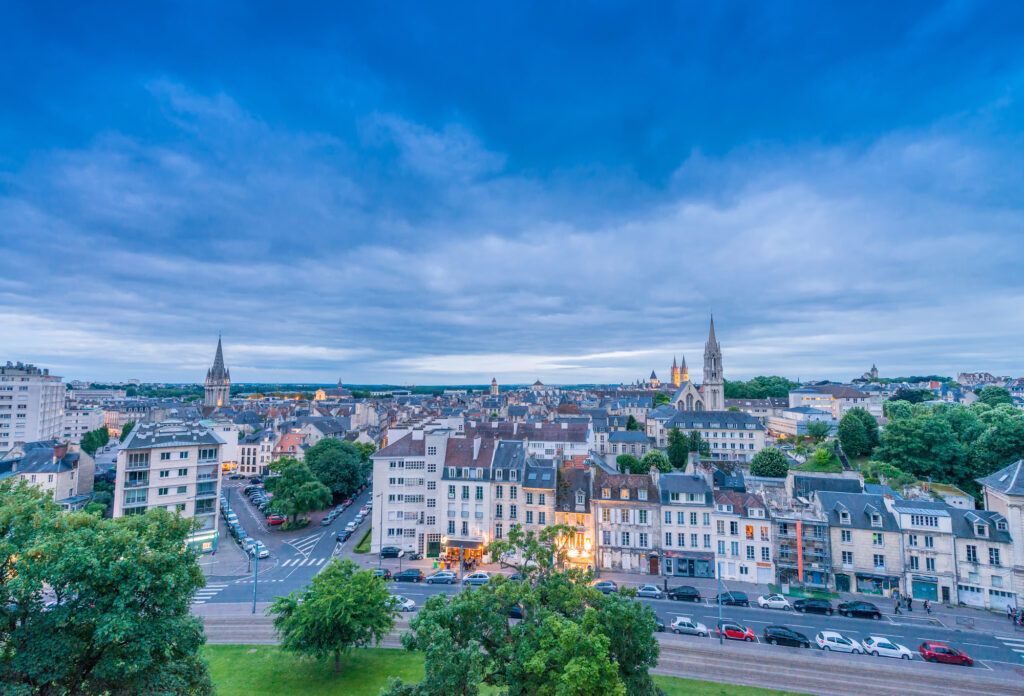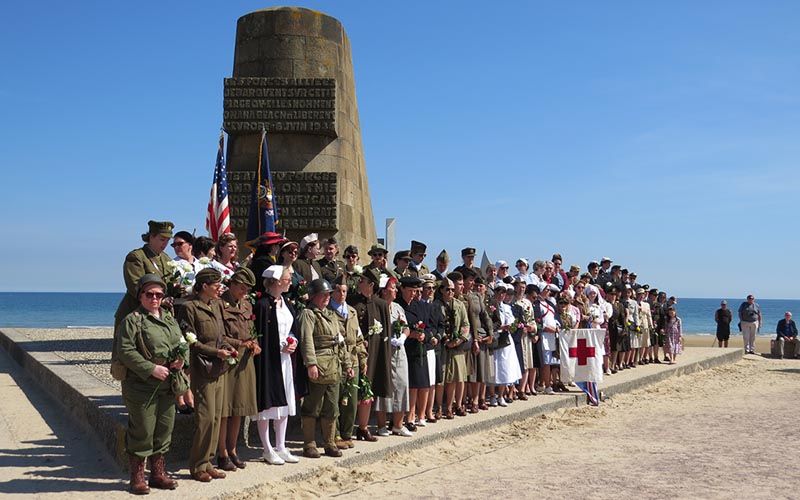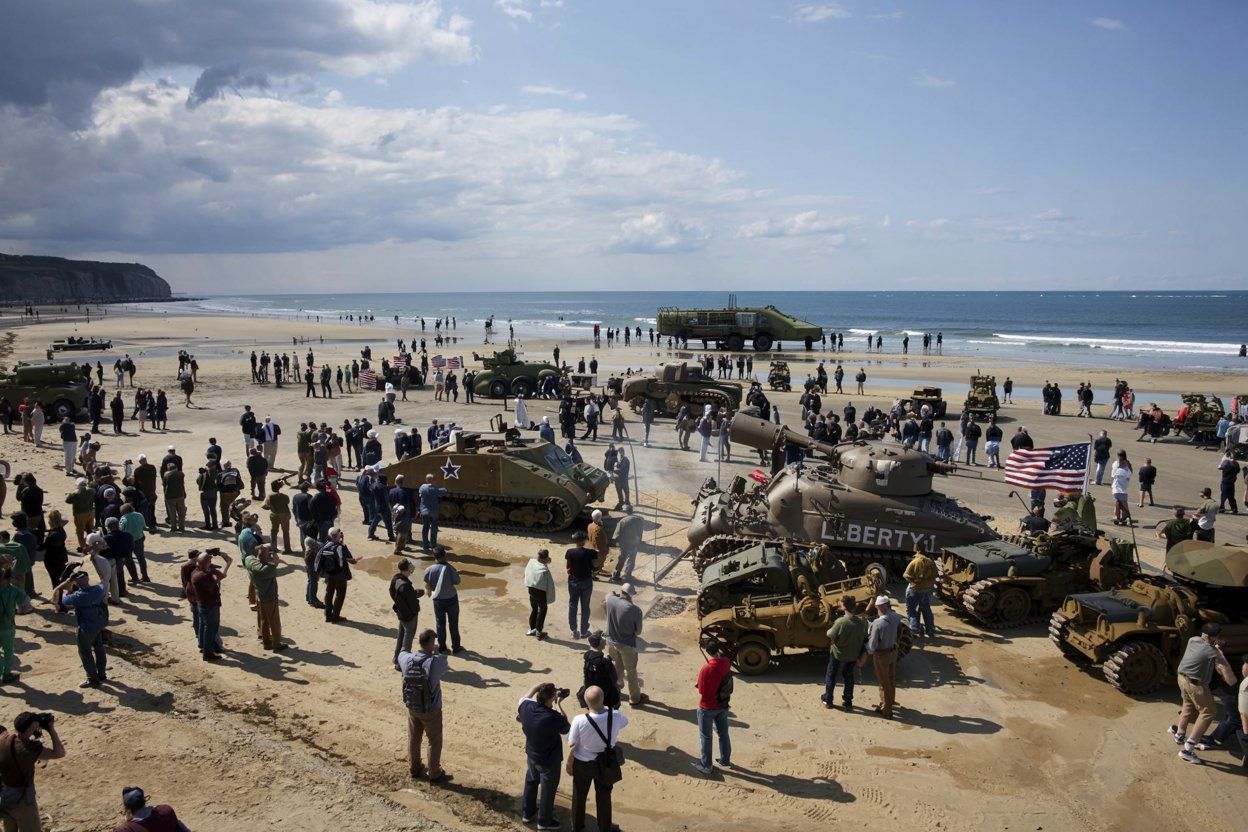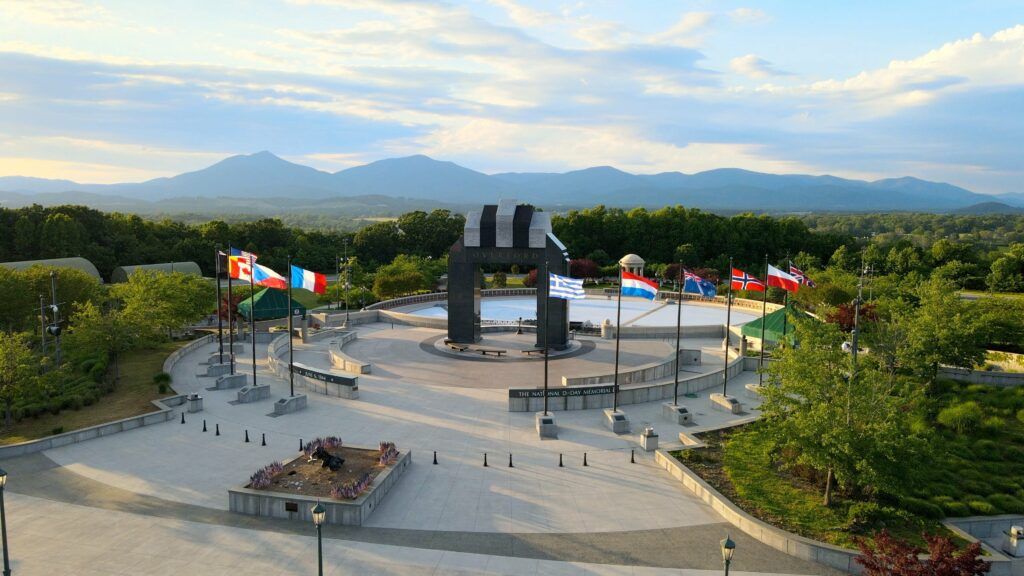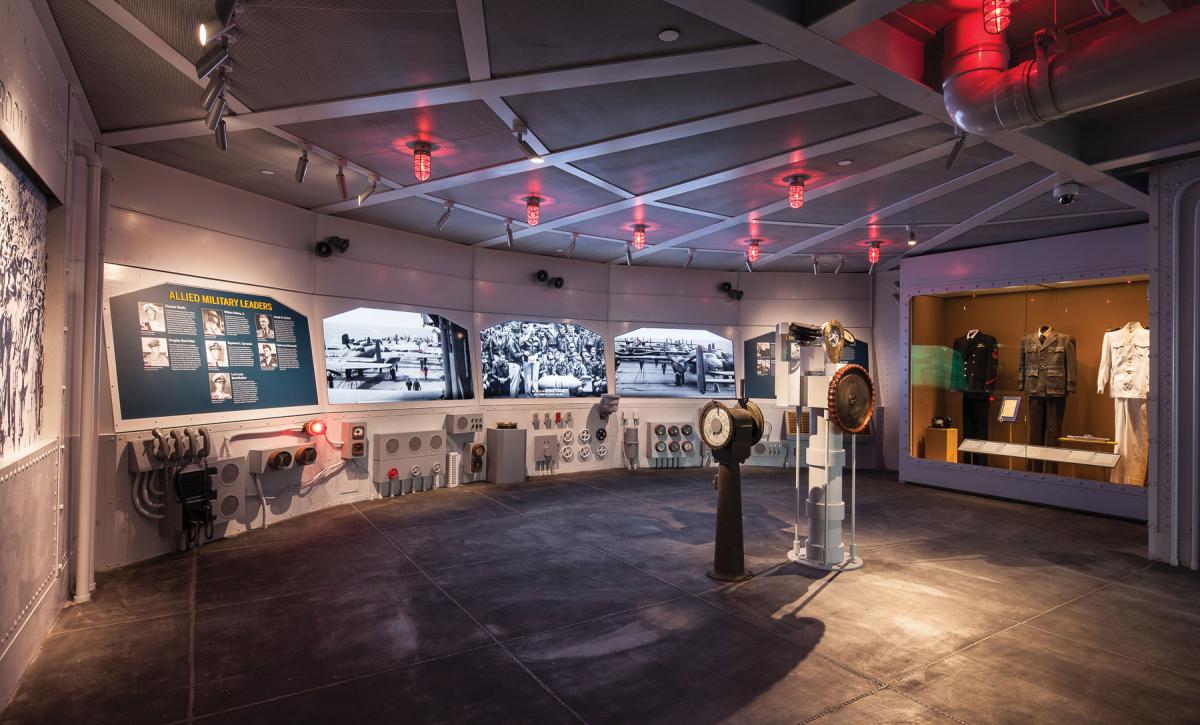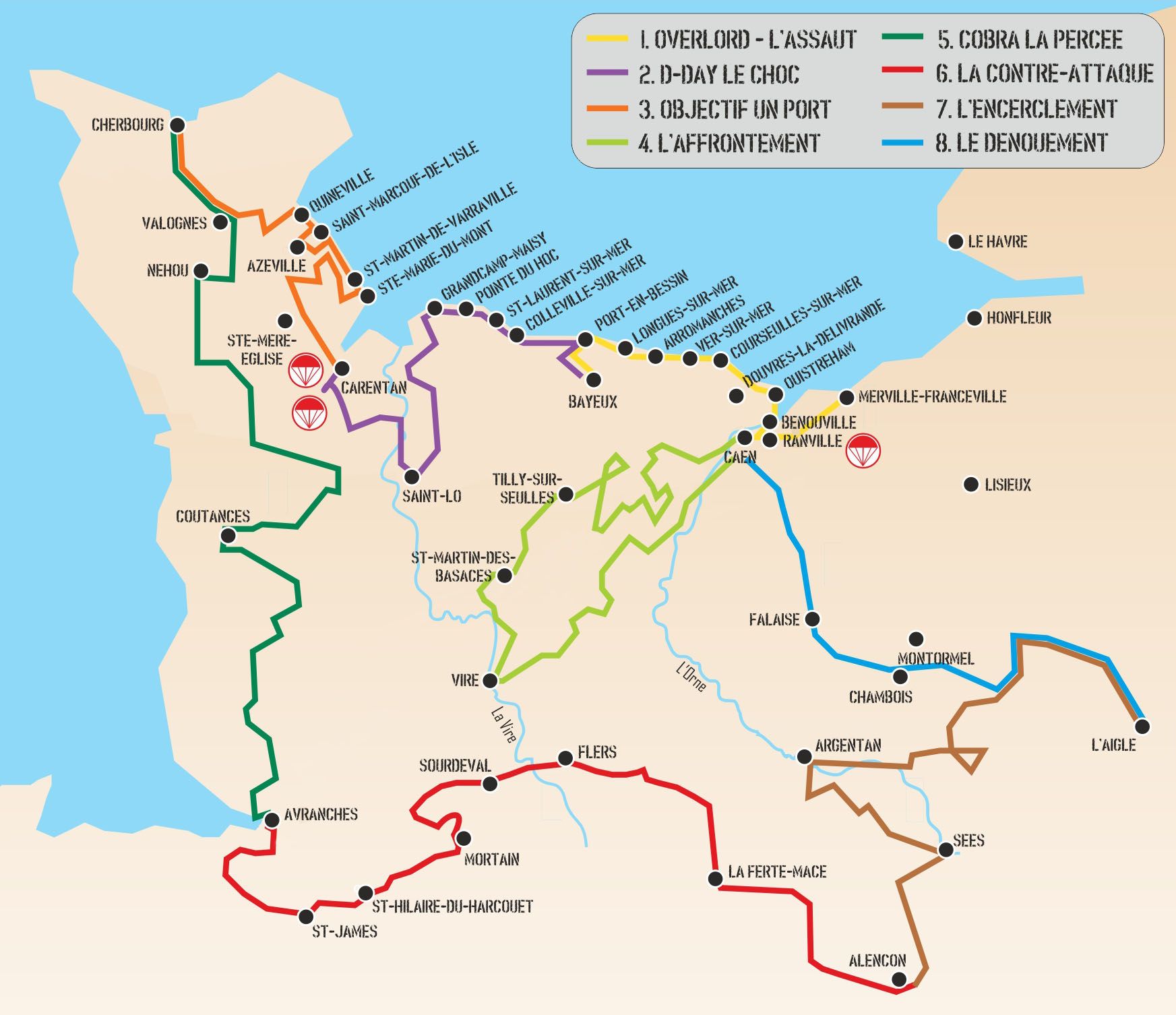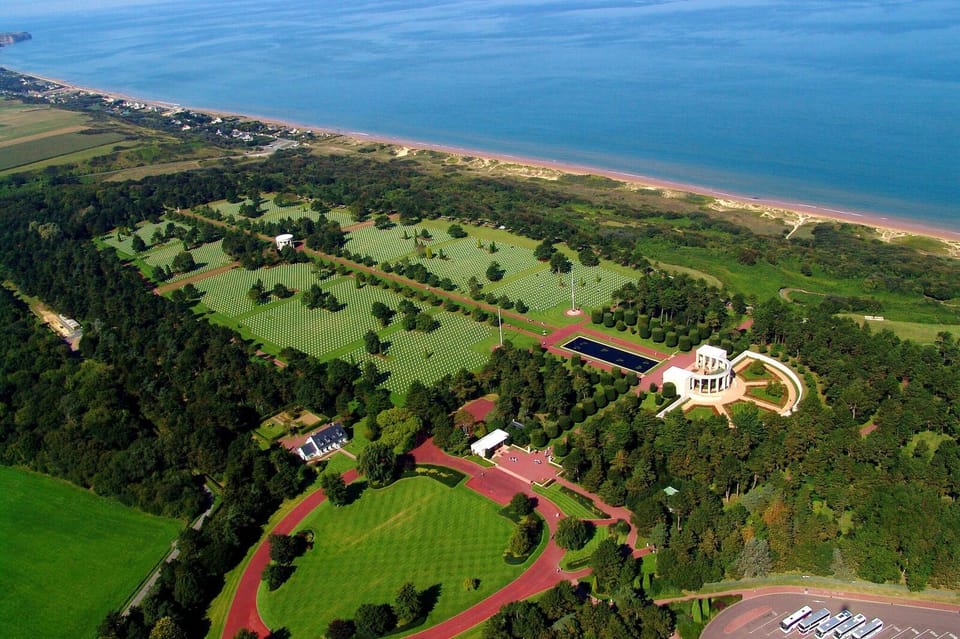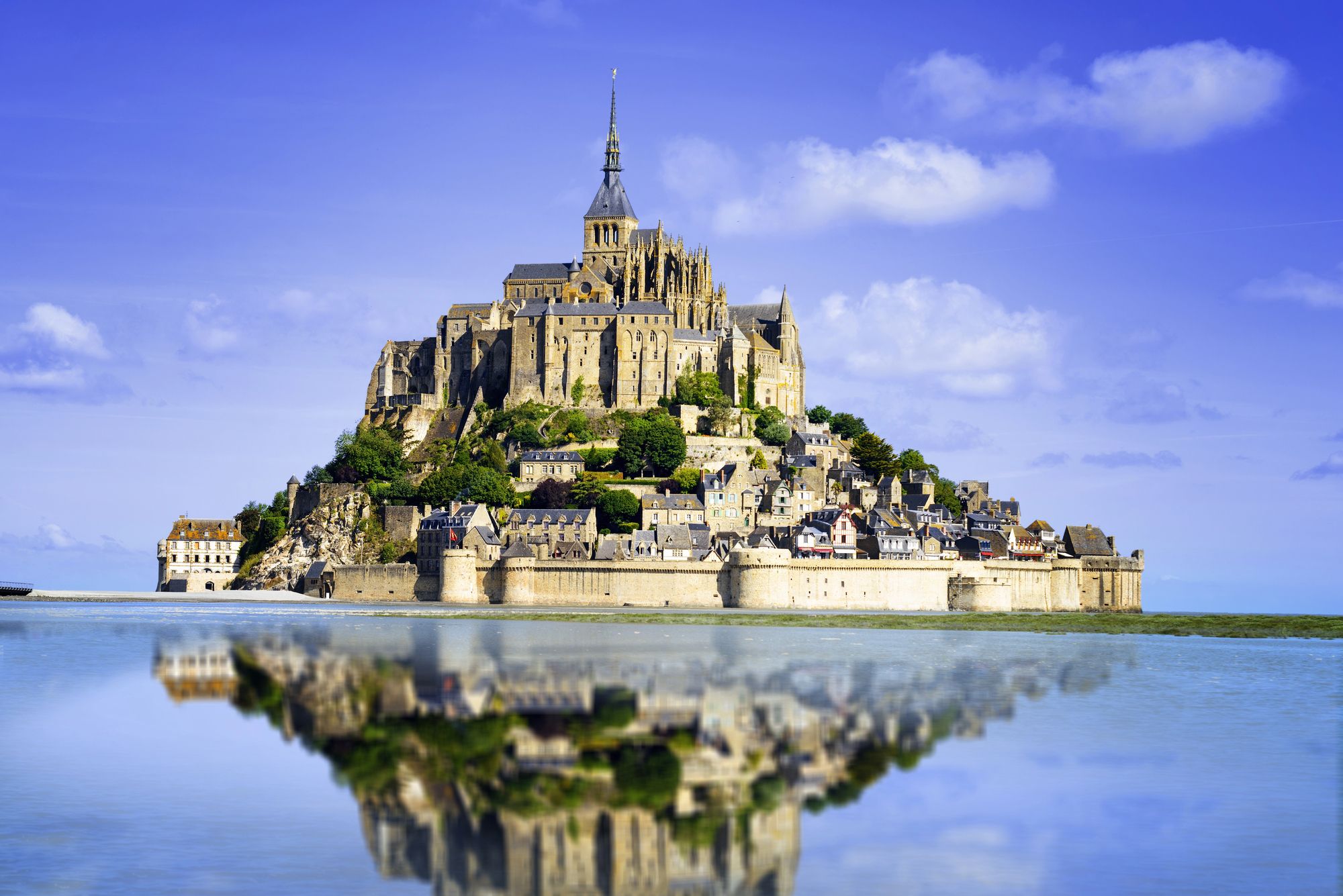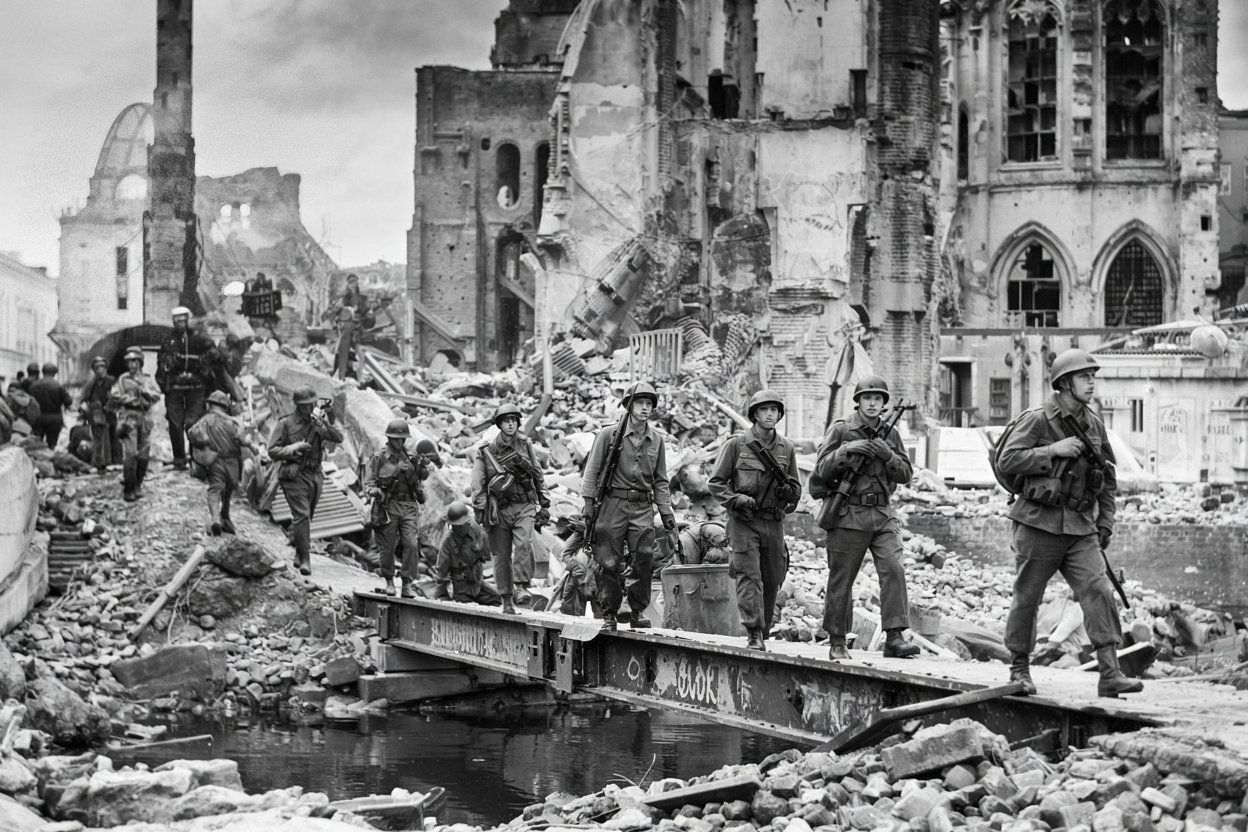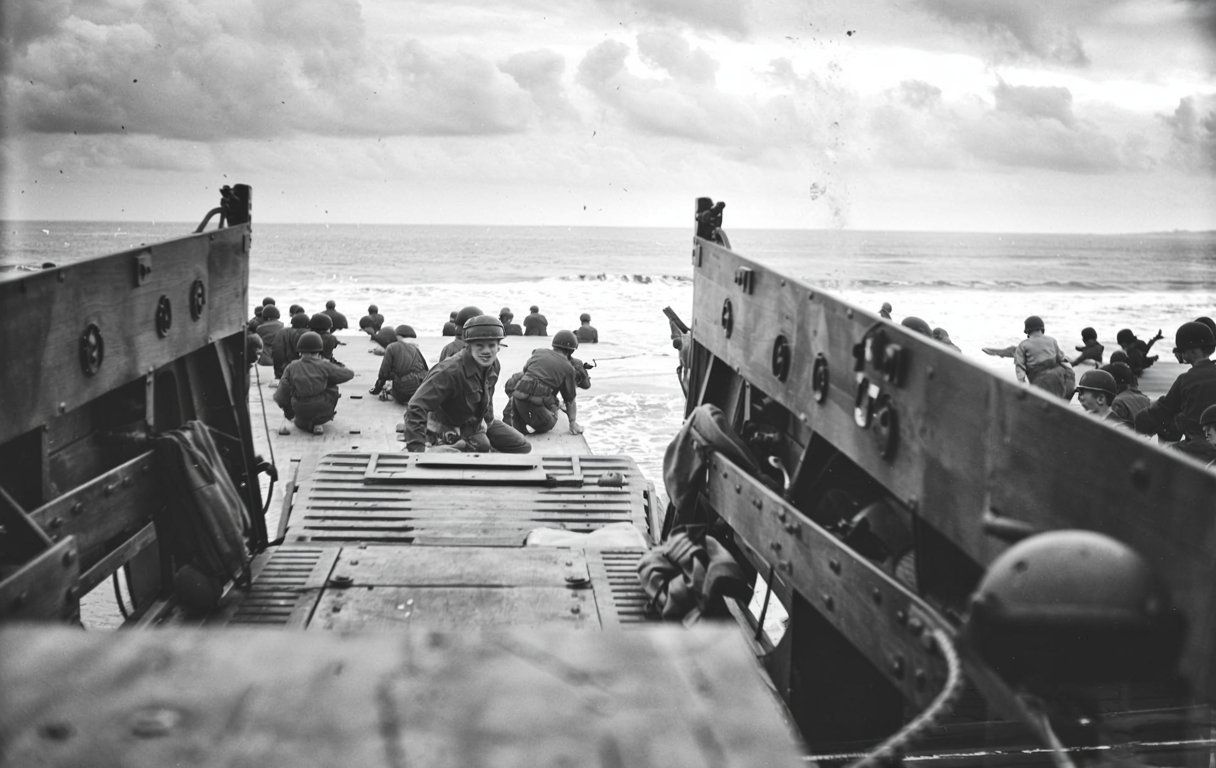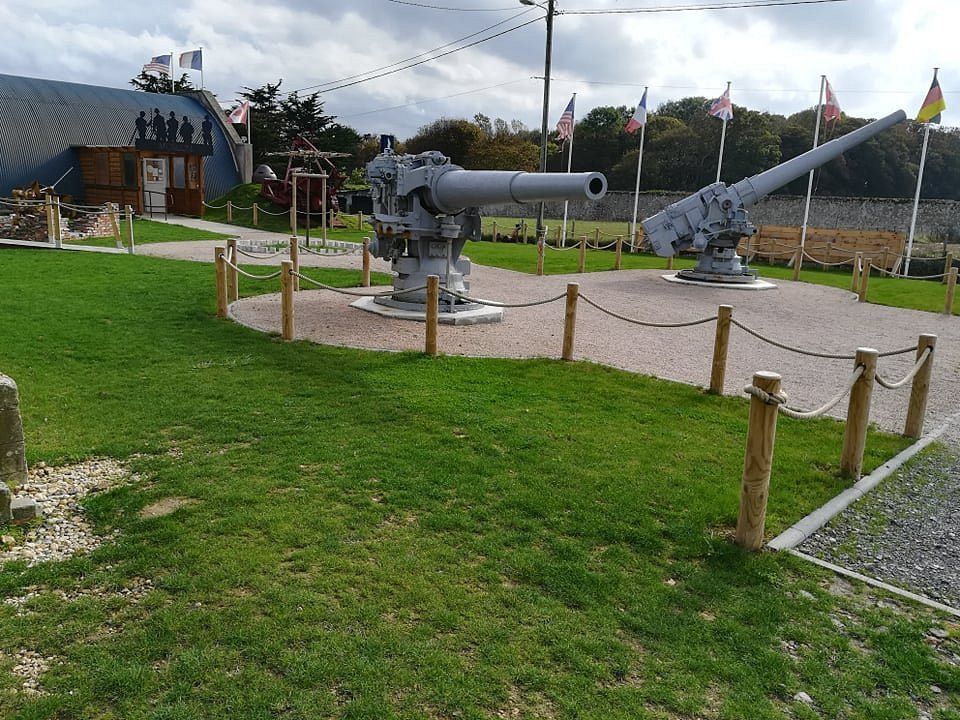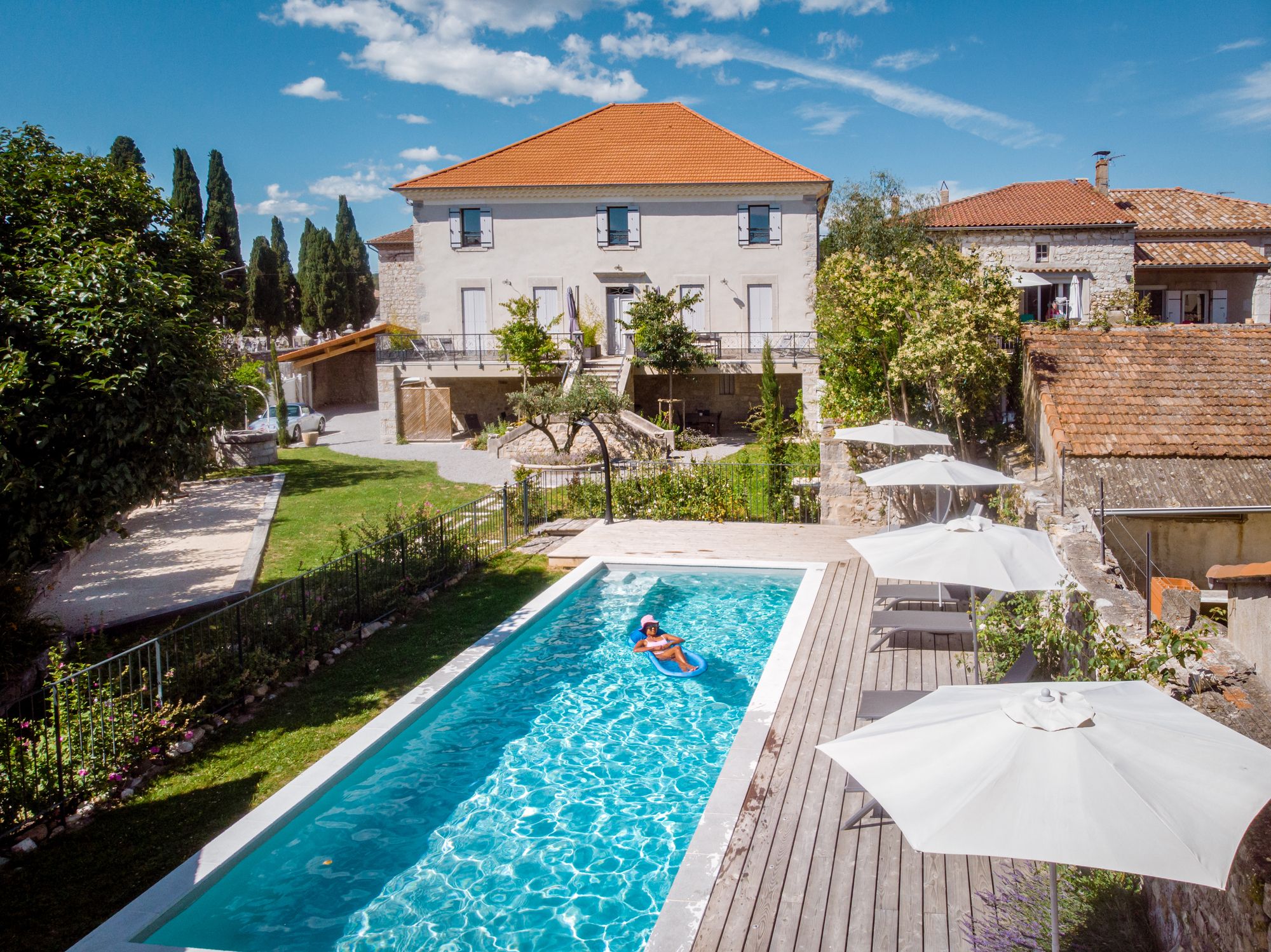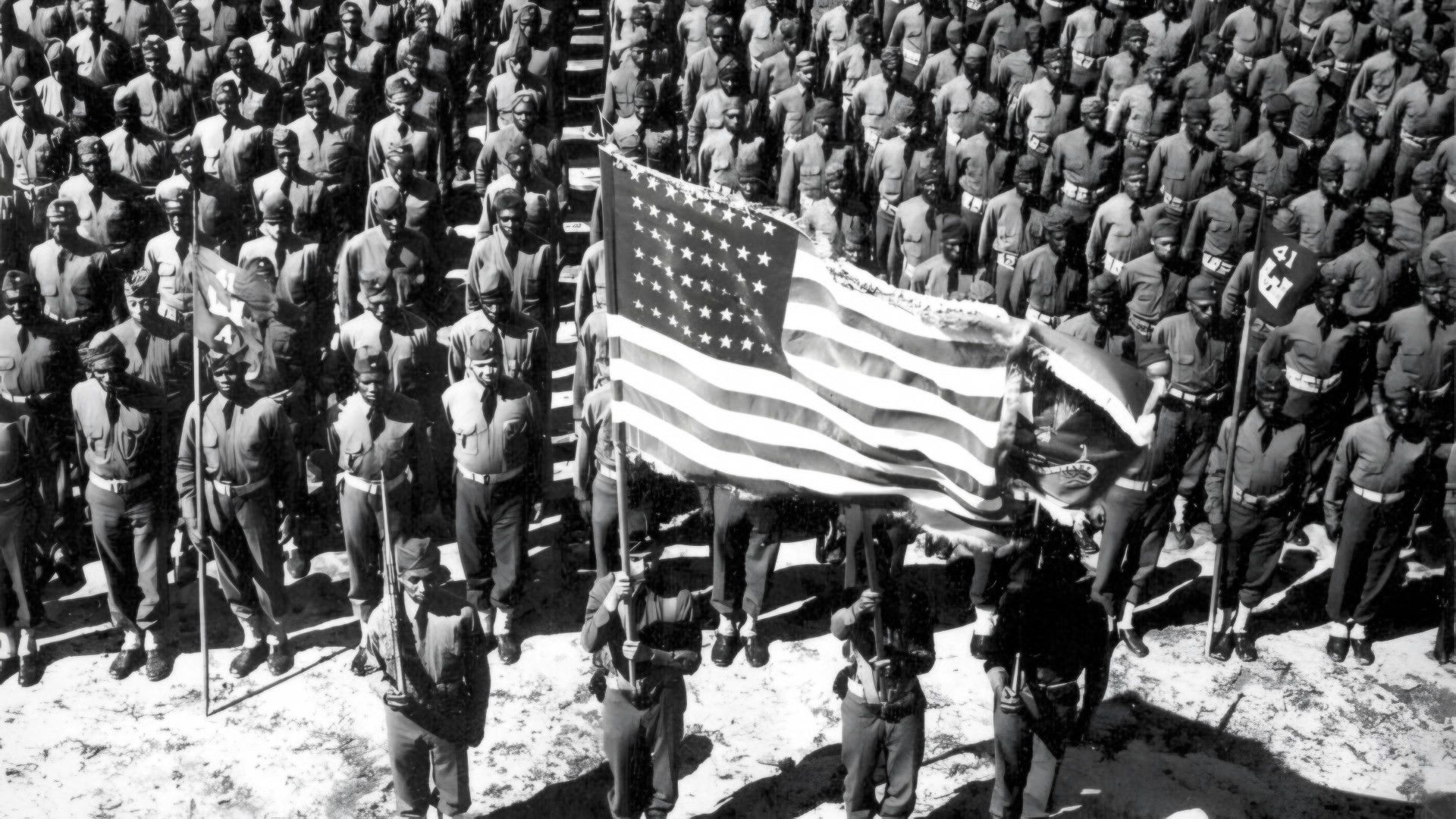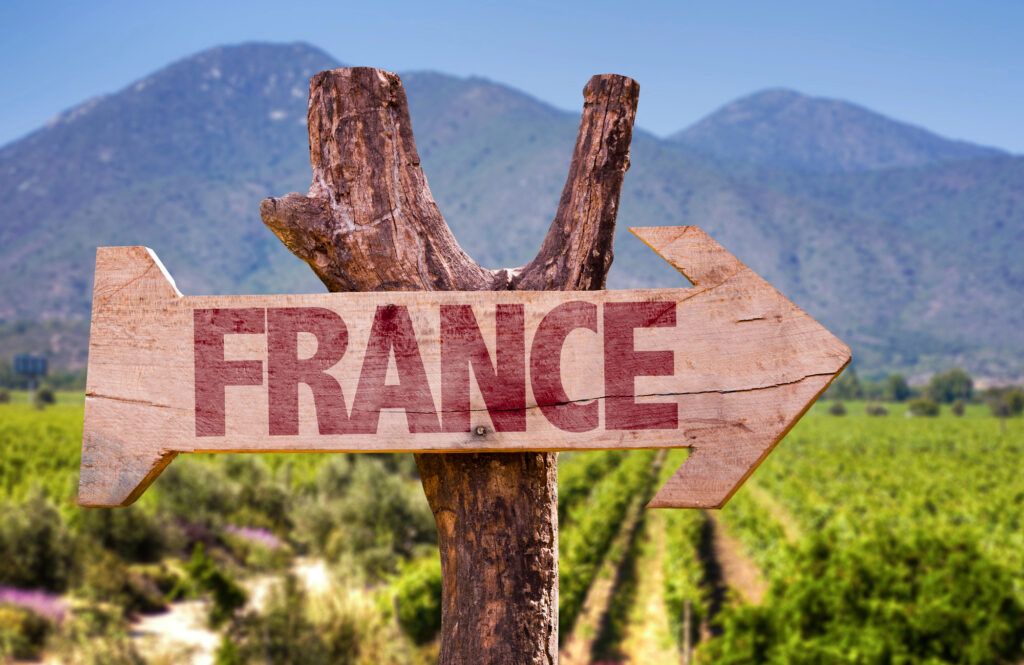October in Normandy is a different kind of magic. The crowds thin out, the air turns cool and briny, and those gold-tinged landscapes start to feel almost cinematic. Honestly, you notice details you’d miss in the summer rush—maybe a quiet lane, a bakery’s scent, or the way the sea looks at dusk. It’s the right time to see Normandy’s landmarks, culture, and flavors in a way that feels pretty real.
Here’s a list of what’s worth doing this week, mixing the region’s big stories and small pleasures. You’ll bounce from coastal history to medieval towns, from peaceful museums to cider tastings that get a little lively. No two days are the same, and that’s the point.
1) Visit the D-Day Landing Beaches
Start at Omaha Beach, where U.S. forces landed on June 6, 1944. The Normandy American Cemetery nearby is a quiet spot to pause and think about the scale and cost of what happened there.
Drive along the coast to Utah Beach, where the landings kicked off even earlier that day. The Utah Beach Museum has landing craft, uniforms, and personal stories that help you piece together the bigger picture.
At Arromanches, you’ll spot remnants of the Mulberry Harbour—massive, rusting, and strangely moving. The Arromanches 360 Circular Cinema runs immersive archival footage that puts you right in the middle of the action.
If you’re up for it, go to Pointe du Hoc. U.S. Rangers climbed those cliffs under fire, and the bomb craters and bunkers are still there, raw and unchanged.
Having a car is a game-changer for seeing all five beaches—Omaha, Utah, Gold, Juno, and Sword—since they’re spread out over 80+ kilometers. Destination WWII warns that public transport is patchy, so map your plan ahead.
2) Explore Mont Saint-Michel
Getting to Mont Saint-Michel depends on the tide. Sometimes you can walk the causeway, sometimes you’ll hop a shuttle. Either way, the shifting water levels mean no two visits are quite alike. If you time it right, the arrival itself feels like an event.
Wander up the village streets toward the abbey. The narrow lanes are lined with tiny shops and stone houses—pretty touristy, sure, but still charming.
Inside the Mont-Saint-Michel Abbey, you’ll find Gothic halls and cloisters layered with history. Give yourself at least a couple of hours; the upper terraces have those sweeping bay views everyone talks about.
The ramparts are quieter if you want to escape the crowds. According to Normandie Lovers, early mornings and sunsets are the sweet spots—better light, fewer people, and a bit of calm.
For a deeper dive, consider a guided walk across the bay. Local guides talk about tides, quicksand, and the island’s oddball history—honestly, it ties the place together in unexpected ways.
3) Tour the Bayeux Tapestry Museum
The Bayeux Tapestry Museum houses Normandy’s most famous artifact: an 11th-century embroidery that tells the story of the Norman Conquest of England. The whole thing is 70 meters long and reads like an ancient comic strip—horses, battles, drama, and all.
You’ll walk the length of the tapestry, with clear lighting and just enough info to keep you following along. Audio guides are available in several languages, which helps if you want to take it slow and actually absorb the story.
Crowds aren’t as bad as in summer, but it still gets busy late mornings. Early or late visits are usually more relaxed. No photos allowed, so you’ll have to actually look.
If you want to prep before you go, check out Tripadvisor’s guide to Bayeux attractions or read U.S. News Travel’s overview. Both are helpful for practical tips and recent reviews.
4) Taste local Calvados apple brandy
You really shouldn’t leave Normandy without trying Calvados, the region’s signature apple brandy. It’s distilled from cider and aged in oak, picking up flavors from the local apples and the land itself. People here often sip it between courses as a “trou Normand”—a palate cleanser with a kick.
Start at the Calvados Experience in Pont-l’Évêque, an interactive museum that walks you through the whole process, from orchard to bottle. It’s a sensory tour—lots to see, smell, and taste.
Plenty of distilleries along the Normandy Cider Route offer tours and tastings. You’ll get to compare young and old Calvados, and see how blending changes the flavor. Some spots also make cider and pommeau, so there’s more to try if you’re curious.
Expect a mellow, rural vibe. Some smaller distilleries only open seasonally, so check hours ahead. Even if spirits aren’t usually your thing, Calvados is a real taste of Normandy’s farm culture and tradition.
5) Stroll through Honfleur’s old harbor
Kick off your visit at the Vieux Bassin, Honfleur’s postcard-perfect harbor. The tall, narrow houses in pastel shades reflect on the water—honestly, it’s hard to take a bad photo here. The harbor used to be a busy trading post, and you can still feel some of that energy.
As you wander the quays, you’ll pass cafés and little galleries—Honfleur’s always drawn artists. Eugène Boudin painted these very scenes, and you can see his work at the local museum. On weekends, locals show up for markets and boat rides, giving the place a lively feel.
If you want to see more than the harbor, duck into the side streets. Half-timbered houses and cobblestone lanes hint at Honfleur’s past as a fishing port turned cultural hub. For more ideas, check the best things to do in Honfleur or browse Honfleur’s attractions.
6) Hike the Normandy Coastline trails
Normandy’s coastline is made for walking. There are over 3,000 kilometers of marked trails, including the GR223, running from Mont-Saint-Michel to the Seine estuary. You’ll get big sea views, cross through fishing villages, and wander stretches of farmland—never boring, that’s for sure.
Try the trails near Étretat for dramatic cliffs and short, steep climbs. The Cotentin Peninsula offers quieter, flatter routes if you’d rather take your time.
You can find route maps and advice on Walks & Hikes in Normandy or check out Komoot’s Normandy hiking guide for user reviews. There’s something for every level.
Weather flips fast by the sea, so bring layers and double-check tide times. Some paths cross beaches that vanish at high tide. Early starts usually mean better light and fewer people.
7) Attend a Normandy cider tasting event
Normandy’s cider scene is woven into the countryside. The Normandy Cider Route links local producers, making it easy to visit a few in one day. You’ll meet cider makers, see how the process works, and taste everything from bone-dry to sweet.
Most tastings happen in family-run farms. Expect old presses, stone barns, and orchards that have been around for ages. The vibe’s friendly, and people genuinely like sharing the differences between cider, perry, and Calvados.
Some places offer guided tastings paired with local cheeses like Camembert and Livarot. The Normandy cheese and cider tasting is a great way to see how dairy and apple farming go hand-in-hand here.
Fall is the perfect time—apples are just pressed, and the countryside’s busy with harvest. You might need to drive between villages, so sort out your ride in advance. It’s a relaxed, hands-on way to get a feel for rural Normandy.
8) Discover the medieval town of Rouen
Rouen is just 90 minutes from Paris, so it’s a solid day trip or weekend stop. The city still wears its medieval roots, with half-timbered houses and twisty lanes everywhere. Walking the old town, you get a sense of how trade and religion shaped Normandy’s story.
The Gothic spires of Rouen Cathedral are impossible to miss—Monet painted them again and again. The nearby Gros-Horloge, a Renaissance clock, is another local favorite. Both landmarks pop up in every travel guide, including Normandie Lovers’ list of the best things to do in Rouen.
Check out the square where Joan of Arc was executed; now there’s a modern church honoring her. The Musée des Beaux-Arts houses art from the 15th to 20th centuries, giving you a real sense of the region’s creative side.
Rouen’s cafés and markets are more low-key than the coast. Grab some cheese, cider, or a pastry, and just watch life go by—sometimes that’s the best way to take it all in.
9) Visit the Caen Memorial Museum
The Caen Memorial Museum is Normandy’s go-to spot for understanding World War II and its aftermath. Open since 1988, it covers the D-Day landings, the Battle of Normandy, and even the Cold War, using films, artifacts, and detailed exhibits.
Set aside at least half a day for your visit. The museum walks you through events in order, making it easier to see how everything connects—from the rise of conflict to rebuilding after the war.
It’s a thoughtful, almost somber space. The design encourages you to slow down and really take things in. Memorial gardens outside offer a place to pause and reflect after the exhibits.
If you want a primer before hitting the beaches, this museum helps make sense of what you’ll see later. The Normandy Tourism site explains how the museum links war history to bigger conversations about peace.
There’s a café, bookshop, and English-language tours. Ticket prices change with the season, and it’s smart to book ahead if you’re coming during busy weeks.
10) Explore the Château de Falaise
Here you are, standing in the birthplace of William the Conqueror. The Château de Falaise looms over town from its rocky perch, a fortress that’s been watching the valley since the 11th century. Thick walls, chunky towers—this place was built to show off the power of the early Dukes of Normandy and keep out anyone who disagreed.
Step inside and you’ll find digital projections and some cleverly rebuilt rooms. They don’t bombard you with trivia. Instead, the exhibits pick out the big moments in Norman history and let you imagine the rest. You can wander through the keep at your own pace with a tablet guide that gives you just enough info to keep things interesting.
Climb up to the ramparts and you’re rewarded with a view that stretches across the valleys of the Ante and Marescot rivers. The climb’s a bit steep, but not too bad, and the panorama is worth catching your breath for. It’s wild to see how the old medieval layout still shapes the streets of modern Falaise.
If you’re coming by train or bike, the region’s set up low-carbon travel routes. Normandy Tourism makes a point of highlighting the château as a must-see for anyone curious about William the Conqueror and the legacy of the Norman dukes (Normandy Tourism).
Essential Tips for Visiting Normandy in October
October in Normandy feels calm—mild weather, fewer crowds, and a slower rhythm that rewards anyone willing to plan ahead. Temperatures swing, so pack smart. And you’ll want to know how to get around and fit in with local habits, which mix rural tradition with a bit of city polish.
Weather and What to Pack
October’s weather in Normandy jumps from chilly mornings to surprisingly mild afternoons. Average highs hover near 15°C (59°F), and rain shows up often, though usually just a light drizzle. Along the coast, that Channel wind cuts right through, so it feels colder than you’d think.
Bring layers—long sleeves, a warm sweater, and a waterproof jacket are your best friends. Shoes with good grip help on wet cobblestones or grassy hills.
Don’t forget a compact umbrella and quick-dry clothes. Locals lean toward neutral colors and practical coats—leave the neon windbreakers at home. If you’re heading to places like Mont-Saint-Michel or the D-Day beaches, waterproof footwear will save you a lot of discomfort.
For dinner in small towns, stick to casual but tidy clothes. Even at informal spots, restaurants appreciate guests who look like they tried a little.
Local Transportation Options
Normandy’s towns and villages sprawl across the region, so figuring out your transport ahead of time makes life easier. Trains link up big cities like Caen, Rouen, and Bayeux, while regional buses connect smaller spots. Renting a car gives you the freedom to chase down rural landmarks or cruise the coast.
Driving’s mostly straightforward, but rural roads get narrow fast. Outside cities, fuel stations often close early, so don’t push your luck with a near-empty tank. Small towns usually offer free parking, though it can be tight near popular sights.
If you’d rather not drive, guided day tours leave from Caen and Bayeux, hitting the main historical and cultural sites. Cycling’s a good bet in flatter areas like the Cotentin Peninsula, but October rain can make it less appealing.
For schedules and route maps, check local transport apps or the official Normandy Tourism site.
Cultural Etiquette for Visitors
People in Normandy appreciate politeness and a bit of quiet. Always greet shopkeepers or restaurant staff with a “Bonjour, Madame/Monsieur” before you ask anything. Skipping it? That’s a quick way to get the cold shoulder.
Tipping’s not a big deal—service is included—but rounding up a little shows you noticed good service. Locals eat later than most visitors, and many restaurants don’t open for dinner until 7:30 p.m.
At memorials or cemeteries, keep your voice down and be respectful. You can usually take photos, but don’t make a scene.
In markets and cafés, patience is golden. Queues move slowly, and people like to chat before getting down to business. A calm, friendly approach earns you better service and maybe even a smile.
Maximizing Your Normandy Experience
If you want to get the most out of Normandy, tune your plans to the local pace. Early mornings, small towns, and meals that actually taste like the region—those are the real highlights.
Insider Advice for Avoiding Crowds
The D-Day beaches and Mont-Saint-Michel draw the biggest crowds. Get there before 9 a.m. or after 5 p.m. to dodge the masses. Tuesdays and Thursdays are usually quieter than weekends—why not take advantage?
Smaller coastal villages like Barfleur and Saint-Vaast-la-Hougue have the same salty charm without the bustle. Not sure where to start? This guide to Normandy attractions has some solid ideas.
Start your day at local markets for fresh produce and a relaxed vibe. Bayeux and Honfleur open their markets by 8 a.m., so you can browse before the crowds roll in.
For museums and memorials, book timed tickets online if you can. Places like the Caen Memorial and Arromanches 360 limit entry, so you won’t have to wait in endless lines.
Recommended Local Foods and Drinks
Normandy’s food scene really leans into dairy, apples, and seafood. You’ve got to try Camembert, Pont-l’Évêque, and Livarot cheeses—ideally straight from a farm shop. Grab some crusty bread, pour a glass of local cider, and you’ve got yourself a proper meal.
Apples show up everywhere in Normandy. Most cafés or little distilleries around Domfront serve cidre brut or pommeau. If you’re up for something stronger, Calvados—that punchy apple brandy—might surprise you.
Seafood’s at its best along the coast. Oysters in Cancale? Yes, please. Mussels in Granville? Absolutely. If you want more ideas, you can check out this top things to eat and do in Normandy list.
A lot of restaurants roll out fixed-price lunch menus that hit the sweet spot between value and local flavor. In smaller towns, it’s smart to book a table ahead of time, especially on Sundays—places tend to close up early.

